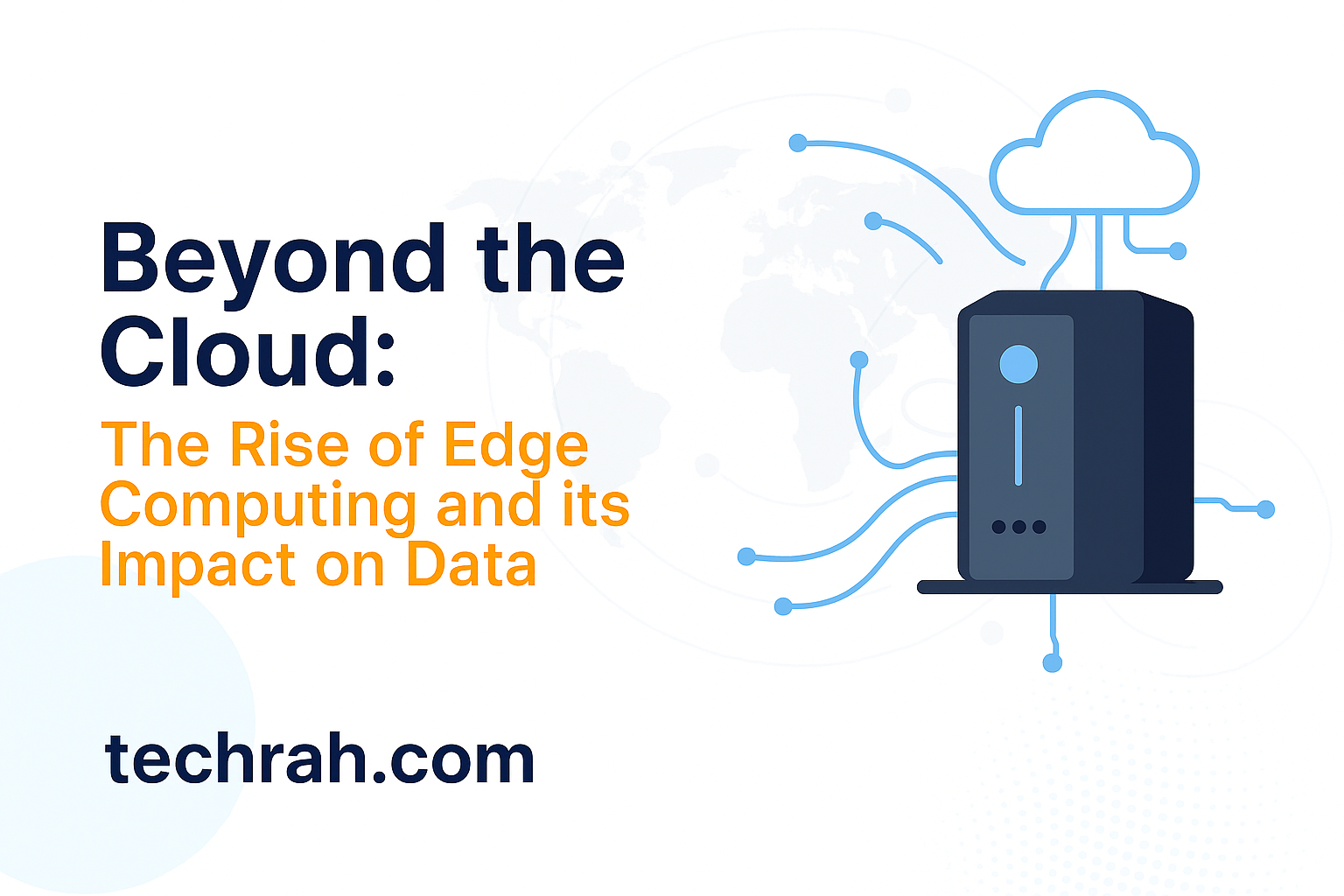For years, “the cloud” has been synonymous with modern technology. It transformed how businesses store data, run applications, and collaborate. But as we enter an era where billions of devices are interconnected, generating an unprecedented torrent of data, the cloud, in its traditional form, is facing new challenges.
Enter Edge Computing: a powerful paradigm shift that’s taking data processing closer to where the data is actually created – at the “edge” of the network. This isn’t about replacing the cloud, but rather extending its capabilities and creating a more efficient, responsive, and intelligent digital infrastructure. For businesses swimming in data, understanding and leveraging edge computing is no longer optional; it’s a strategic imperative.
The Cloud’s Challenge: A Data Deluge
The traditional cloud model works brilliantly for many tasks: data storage, large-scale analytics, and hosting applications. However, it faces hurdles with the sheer volume and velocity of data generated by today’s devices, particularly in the realm of the Internet of Things (IoT).
Imagine millions of smart sensors in a factory, autonomous vehicles, or even smart city cameras. Each generates data constantly. Sending all of that raw data thousands of miles to a central cloud data center, processing it, and then sending a response back introduces several critical issues:
Latency (Delay): The time it takes for data to travel to the cloud and back can be too long for applications requiring immediate responses (e.g., self-driving cars, industrial robots).
Bandwidth Strain: Transmitting petabytes of data from countless devices constantly over networks is incredibly expensive and can overload internet infrastructure.
Security Risks: More data traveling over public networks means more potential points of vulnerability.
Cost: The continuous transfer and storage of all raw data in the cloud can become prohibitively expensive.
This is where edge computing steps in, offering a smarter way to handle the data deluge.
What Exactly is Edge Computing? (Simplified)
Think of it like this:
Traditional Cloud: A massive central library far away. If you need information, you send a messenger (data) to the library, they find it, and send a messenger back.
Edge Computing: Smaller, mini-libraries set up right where the books are being written. Instead of sending every single word back to the main library, the mini-library processes the immediate information, only sending back the summarized, critical insights.
In technical terms, edge computing processes data closer to its source – often on the device itself (like a smart camera) or on a local server (an “edge device”) located near the data-generating devices. This could be in a factory, a retail store, a vehicle, or a remote oil rig.
The goal is to perform computations at the “edge” of the network, reducing the need to send vast amounts of data to a centralized cloud or data center.
Example: Imagine a smart factory with hundreds of machines. Instead of each machine sending every tiny bit of operational data to a cloud server miles away, an edge gateway in the factory gathers the data, analyzes it locally for anomalies, and only sends alerts or summarized reports to the cloud. This allows for immediate action if a machine is failing and reduces cloud data transfer by a massive margin.
The Transformative Impact of Edge Computing on Data & Business
Edge computing isn’t just a technical tweak; it’s a strategic enabler for the next wave of digital transformation. Here’s how it’s fundamentally impacting data and offering immense value to businesses:
Real-Time Insights and Actions:
Impact: By processing data at the source, edge computing slashes latency.
Example: For autonomous vehicles, milliseconds matter. Edge computing allows vehicles to instantly analyze sensor data (traffic, pedestrians) and make immediate driving decisions without waiting for a cloud response, ensuring safety and efficiency. In manufacturing, edge systems can detect machine malfunctions in real-time and trigger immediate shutdowns or maintenance alerts, preventing costly downtime.
Massive Bandwidth and Cost Reduction:
Impact: Only relevant, pre-processed data is sent to the cloud, significantly reducing data transfer needs.
Example: A retail store with hundreds of smart cameras can use edge devices to analyze video feeds locally for customer foot traffic patterns or security threats. Instead of uploading all raw video (terabytes of data), only aggregated insights or specific alert clips are sent to the cloud, saving immense bandwidth and cloud storage costs.
Enhanced Security and Data Privacy:
Impact: Sensitive data can be processed and even stored locally, reducing exposure during transit.
Example: In healthcare, patient data from wearable devices or on-site medical equipment can be analyzed at the edge. Only anonymized or aggregated insights might be sent to the cloud, improving privacy compliance and reducing the risk of data breaches for highly sensitive information.
Reliable Operations in Remote or Disconnected Environments:
Impact: Edge devices can operate effectively even with intermittent or no internet connectivity.
Example: An oil rig or a remote agricultural farm might have unreliable internet. Edge computing allows critical operations, data collection, and analytics to continue locally, syncing with the cloud only when a connection is available, ensuring continuous operation and data integrity.
New Possibilities for AI and Machine Learning at Scale:
Impact: AI models can be deployed directly onto edge devices, bringing intelligence closer to the action.
Example: Smart city infrastructure can use edge AI cameras to analyze traffic flow, detect unusual events, or manage waste disposal routes in real-time, making cities more efficient and responsive without overwhelming central servers. Edge devices can also train simpler AI models locally before sending aggregated learning to the cloud for more complex model updates.
Beyond the Cloud with Techrah
The synergy between edge computing and the cloud is the future of data infrastructure. While the cloud remains vital for long-term storage, large-scale analytics, and global application deployment, edge computing is becoming indispensable for real-time processing, localized intelligence, and operational resilience.
Navigating this evolving landscape requires specialized expertise. At Techrah, we help businesses strategically implement edge computing solutions that:
Optimize Performance: By bringing computation closer to your data sources.
Reduce Costs: Through efficient data handling and minimized bandwidth usage.
Enhance Security: By processing sensitive information locally.
Drive Innovation: By enabling real-time applications for IoT, AI, and beyond.
Whether you’re looking to build smart factories, deploy intelligent retail solutions, or enhance your data processing capabilities, Techrah has the expertise to design and implement edge computing architectures tailored to your unique business needs.
Ready to unlock the full potential of your data with next-generation edge computing? Contact Techrah today and let’s build your future-ready infrastructure.








